Women Safety at Workplace -Hema Committee Report & Kolkata Issue

Malala Yousafzai: We cannot all succeed when half of us are held back.
Michelle Obama: There is no limit to what we, as women, can accomplish.
Context:
- The Kerala High Court on September 5, 2024 constituted a Special Bench consisting of Justice A.K. Jayasankaran Nambiar and Justice C.S. Sudha for hearing public interest litigations (PIL) filed following the publication of the Hema Committee report on the issues faced by women working in the Malayalam film industry.
- The Bench had earlier directed the Kerala government to produce the entire report of the Hema Committee before the court.
1.
What is the Historical Context of Women’s Safety at Workplaces in India?
The historical context of women's safety at workplaces in India is rooted in the broader socio-economic and cultural landscape.
Traditional gender roles:
- Indian society has traditionally placed women in domestic roles, limiting their access to the workforce.
- However, with economic modernization and globalization, women's participation in the workforce has increased, bringing issues of workplace safety to the forefront .
Patriarchal structures:
- Historical gender norms and patriarchal structures have created an environment where women are at a disadvantage in the workplace.
Legal restrictions:
- Labor laws have imposed restrictions on women, which have put them at a competitive disadvantage and made them vulnerable to harassment.
Sectoral differences:
- The services, construction materials, metals, and mining sectors have the highest number of complaints of sexual harassment in the workplace.
2.
Enlist forms of sexual harassment at workplace?
| Forms | Analysis |
|---|---|
| Quid Pro Quo: |
|
| Hostile Work Environment: |
|
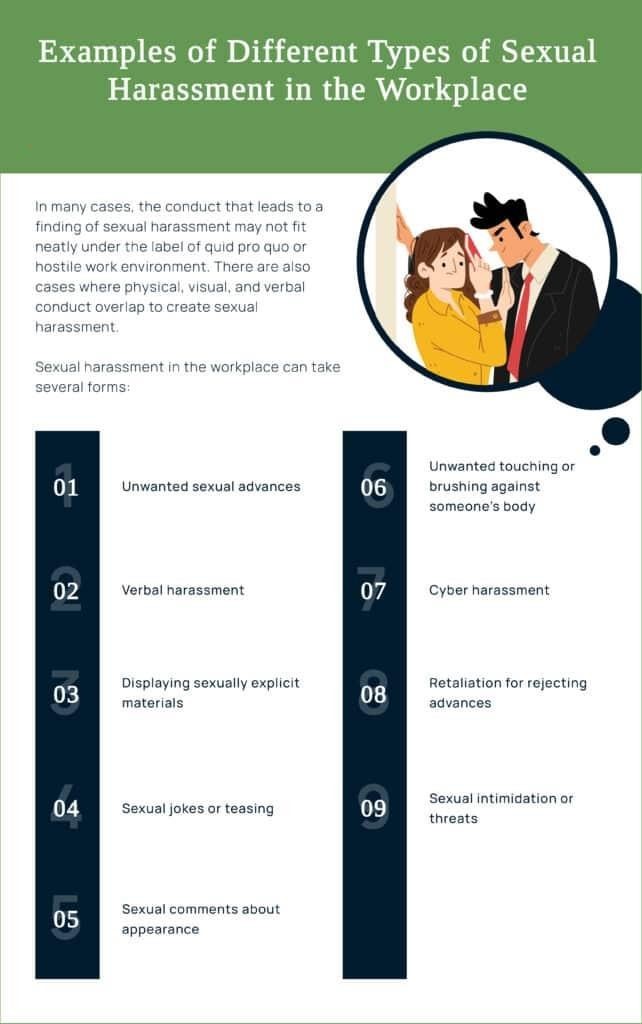
3.
Enlist key findings of Justice Hema Committee Report?
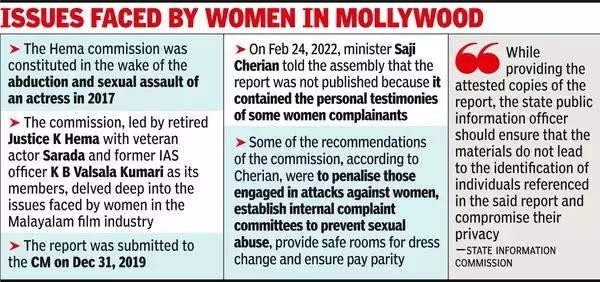
- Justice Hema Committee was formed in response to a petition submitted by the Women in Cinema Collective (WCC) to the Chief Minister of Kerala, Sri Pinarayi Vijayan.
- The Justice Hema Committee, which was constituted in the wake of sexual assault of actress Bhavana who was brutally abducted and raped in a moving vehicle, a heinous crime orchestrated by six men allegedly under the directive of a powerful actor in the industry.
- The Justice Hema Committee submitted its report to the State Government in December 2019,however, it was released on 19th August 2024.
- The committee comprised three distinguished members:
- Justice K. Hema (Chairperson) - Former Judge, High Court of Kerala
- Smt. T. Sarada - One Artist
- Smt. K.B. Valsalakumari - Principal Secretary (Retd), Government of Kerala
| Key issues in Malayalam Industry | Analysis |
|---|---|
| Sexual Harassment and Abuse |
|
| Widespread Gender Disparities |
|
| Workplace Environment and Safety |
|
| Power Dynamics and Discrimination |
|
| Professional Challenges |
|
| Resistance to Addressing Issues |
|
| Legal and Awareness Issues |
|
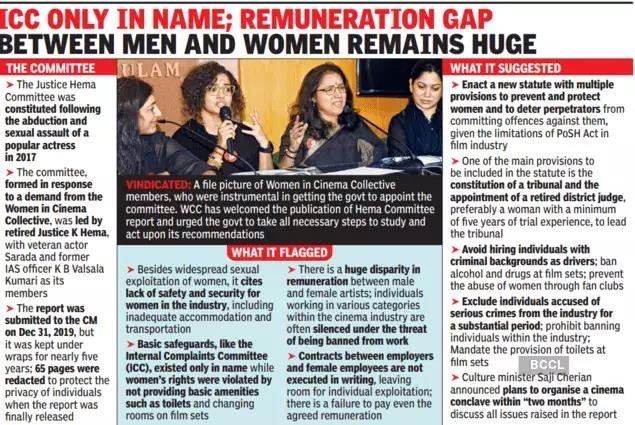
4.
What is the status of women in the workforce?
- According to the Periodic Labour Force Survey (PLFS) 2022-2023, the female labor force participation rate in India increased to 37.0% in 2023, which is a significant jump from 23.3% in 2017-18.
- This is attributed to the government's initiatives to empower women through policies and legislations that focus on their long-term socio-economic and political development.
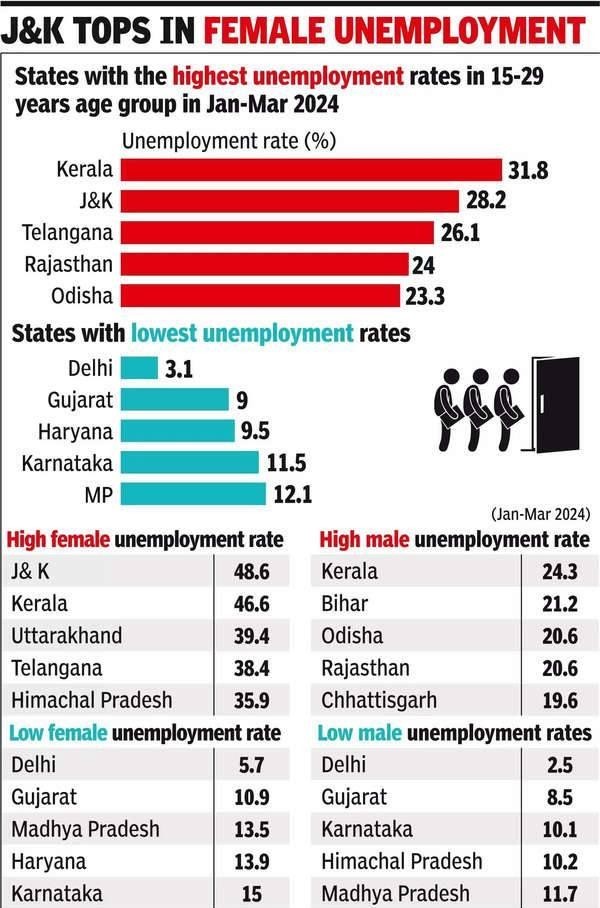
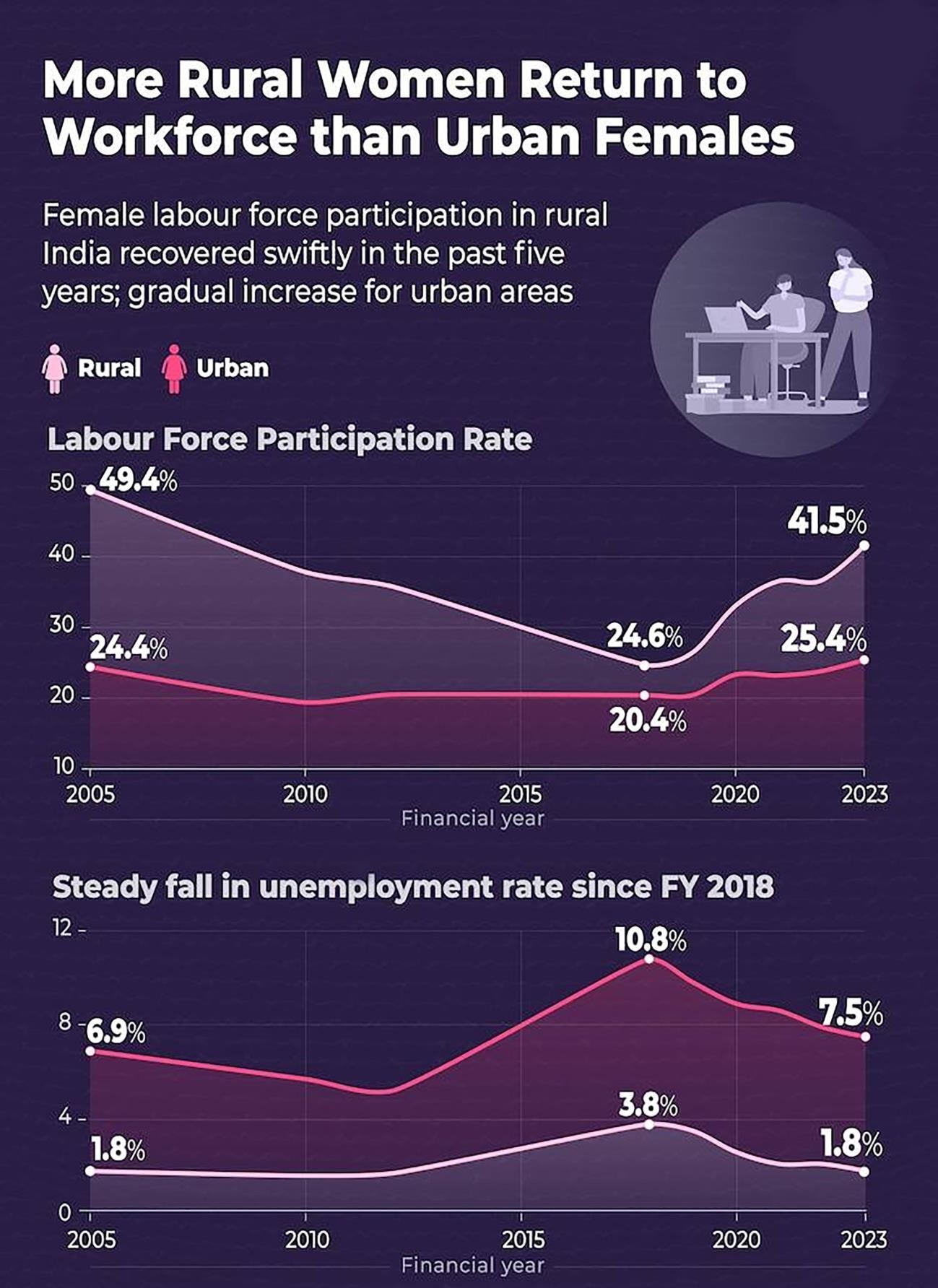
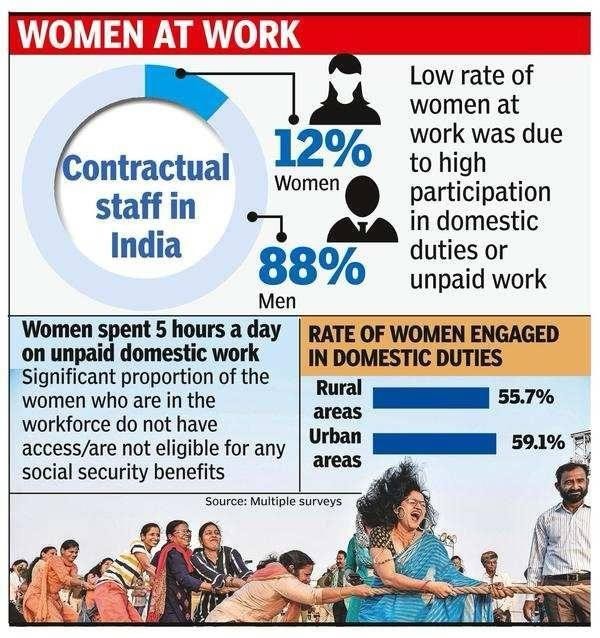
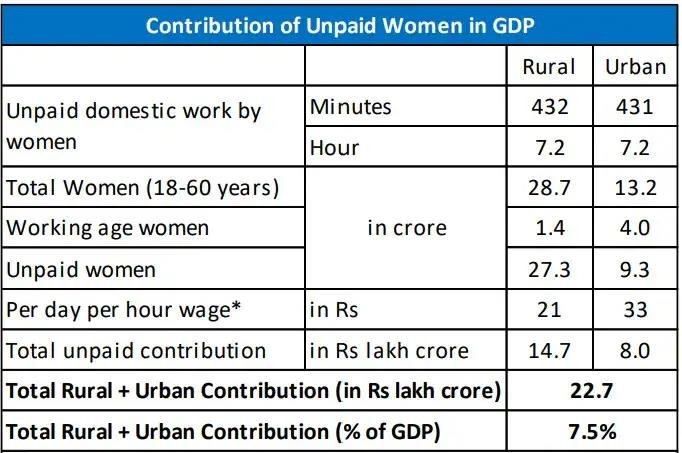
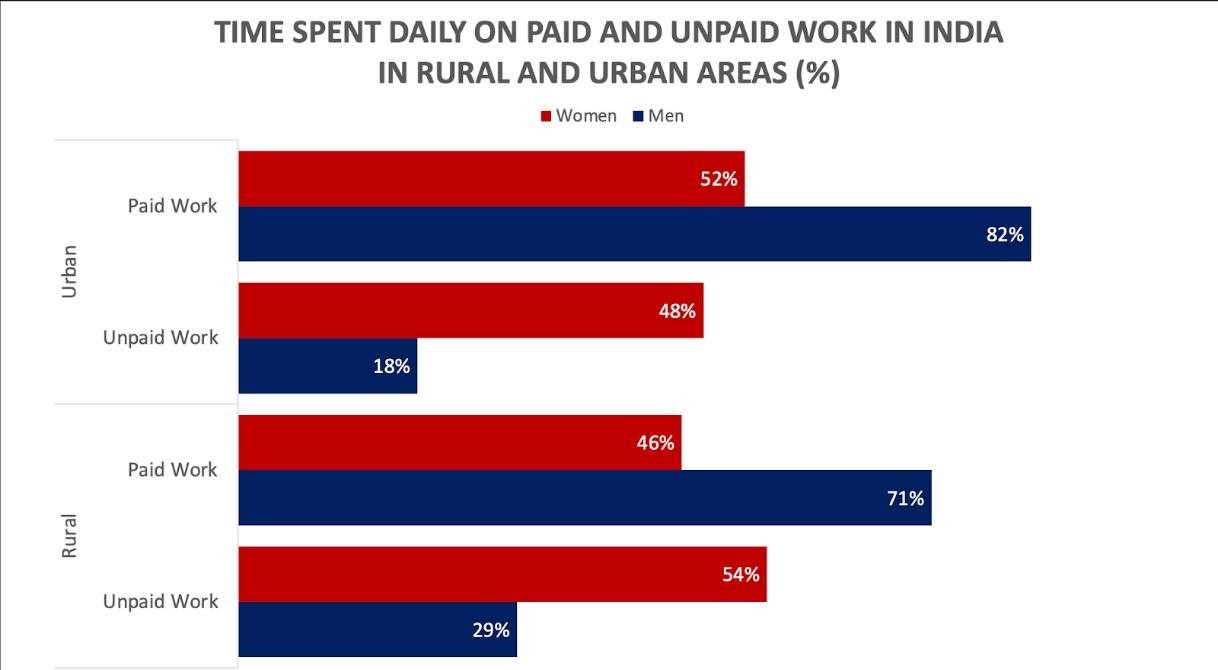
- A 2018 report by Mckinsey Global Institute showed that women’s contribution to India‟s economy is very low at 18 per cent, while it is 41 per cent in China, 40 per cent in Vietnam, 33 per cent in Japan, and 29 per cent in Sri Lanka.
- According to the National Institute of Rural Development and Panchayati Raj it is estimated that the GDP of India would increase by 43 per cent if women had the same work participation rate as men.
5.
What is the magnitude of crime against women?
- India recorded 22.8 lakh crimes against women between 2016 to 2021, of which about 7 lakh, or 30 per cent, were under Section 498A of IPC, as per the MoSPI‟s „Women and Men in India 2022‟ report released in 2023.
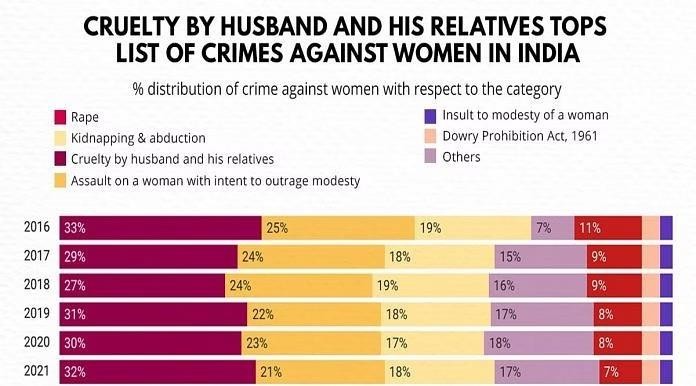
- The Women and Men in India 2023 report shows a rise from 359,849 cases in 2017 to over 445,000 in 2022, averaging 1,220 cases daily, averaging 51 First Information Report (FIRs) per hour.
- The National Family Health Survey-5 found that nearly one-third of women aged 15-49 in India have experienced some form of violence.

6.
Enlist few reasons for increasing rape in India?
Few female police:
- Studies show that women are more likely to report sex crimes if female police officers are available.
- India has historically had a much lower percentage of female police officers than other Asian countries.
Accepting domestic violence:
- Indian society sees domestic violence to be something deserving. UNICEF, in one of its reports, found that 57% of Indian boys and 53% of girls think that the beating of a wife is justified.
Discouragement of rape victims to compromise:
- Families in Indian society are not ready to accept the fact that someone in their family has been raped and they often advise the victims to stay away from the haphazard caused after rape in the police station.
- This is the sole reason why most of the rapes are not even registered in India.
7.
Enlist ways for ensuring women safety at the workplace?
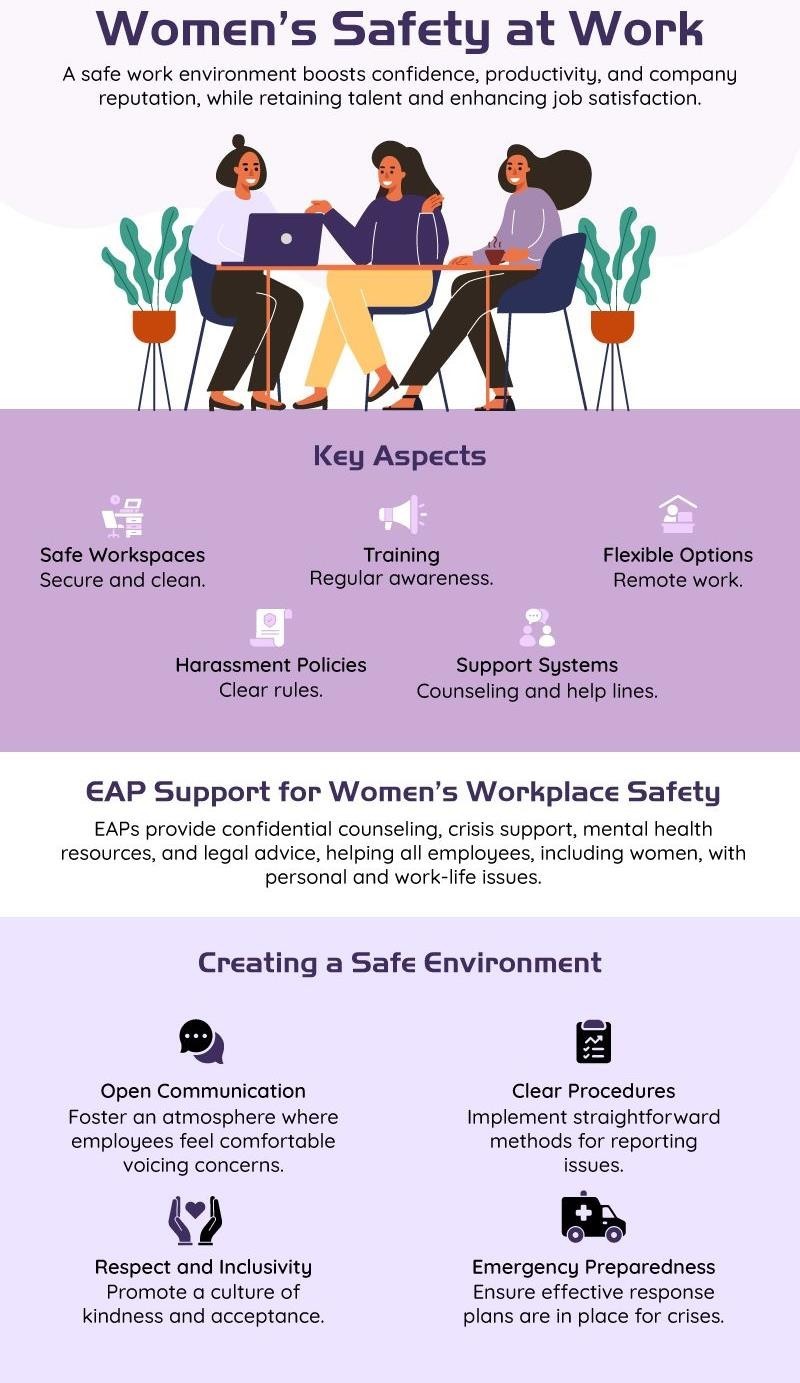
| Ways | Analysis |
|---|---|
| Sexual Harassment Policy |
|
| Create awareness among the employees |
|
| Encourage women to express |
|
| Role of an HR |
|
| Flexible Work Options: |
|
| Internal Complaints Committee (ICC) on women‟s safety |
|
What is the relevance of the topic for UPSC CSE?
For Prelims: Crime Against Women, Gender Equality, National Crime Records Bureau's Annual Reports, Sexual Harassment At Work, Child Marriage, Dowry System, Vishakha Guideline, Supreme Court, Domestic Violence, Acid Attacks On Women, Pre-Natal Diagnostic Techniques Act 1994, Article 21, One Stop Centres, Mahila Police Volunteers, Investigation Tracking System For Sexual Offences, Justice Verma Committee, Representation of Women in Law Enforcement and the Judiciary.
For Mains: Significance of Government Policies & Interventions in Addressing Issues Related to Women,Reservation for women,Nirbhaya Fund,Fast track courts.
Some Previous Years Prelims Questions
Q1. Consider the following statements regarding ‘Nari Shakti Vandan Adhiniyam’ :(2024)
1. Provisions will come into effect from 18th Lok Sabha.
2. This will be in force for 15 years after becoming an Act.
3. There are provisions for the reservation of seats for Scheduled Castes Women within the quota reserved for the Scheduled Castes.
Which of the statements given above are correct?
(a) 1, 2 and 3
(b) 1 and 2 only
(c) 2 and 3 only
(d) 1 and 3 only
Q2. Two of the schemes launched by the Government of India for Women’s development are Swadhar and Swayam Siddha. As regards the difference between them, consider the following statements: (2010)
1. Swayam Siddha is meant for those in difficult circumstances such as women survivors of natural disasters or terrorism, women prisoners released from jails, mentally challenged women etc., whereas Swadhar is meant for holistic empowerment of women through Self Help Groups.
2. Swayam Siddha is implemented through Local Self Government bodies or reputed Voluntary Organizations whereas Swadhar is implemented through the ICDS units set up in the states.
Which of the statements given above is/are correct?
(a) 1 only
(b) 2 only
(c) Both 1 and 2
(d) Neither 1 nor 2
Some Previous Years Mains Questions
Q1. Is the National Commission for Women able to strategize and tackle the problems that women face at both public and private spheres? Give reasons in support of your answer. (2017)
Q2. Discuss the positive and negative effects of globalization on women in India. (2015)
Q3. We are witnessing increasing instances of sexual violence against women in the country. Despite existing legal provisions against it, the number of such incidences is on the rise. Suggest some innovative measures to tackle this menace. (2014)
Some Questions from This Year and Previous Years Interview Transcripts
Board Sanjay Verma sir:
- What do you mean by Women empowerment?
- How crimes against women differ in rural and urban areas.
Board Dinesh Dasa sir:
- What is the status of crime against women ?
- What is the government doing about it?
Board Dinesh Dasa sir:
- What are the things that can be included in the education system for the safety of women in Rajasthan as crime rates against women are high?
Board BB Swain sir:
- Comment on the Women reservation bill and its importance considering the issue of Sarpanch Pati.
Board Sheel Vardhan Sir:
- What is your opinion on the women reservation bill passed recently? Do you think it will make a difference?
Board Dinesh Dasa sir:
- Have you read some books that were recently written by women in STEM? (DAF)
- Would you call Vandana Shiva a scientist or an activist?
- How necessary is science in activism?
Board Lt. Gen. Raj Shukla:
- Does gender equality mean that women should be ahead of men?
- Why are women equated with goddesses in India and should they be?
Some Questions for POLL
Q1. Do you think that women's safety at the workplace increased post nirbhaya case 2012?
(a) YES
(b) NO
(c) Can’t say
Q2. Can capital punishment help in reducing rape?
(a) YES
(b) NO
(c) Can’t say